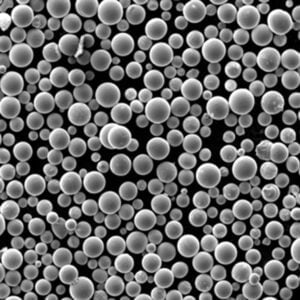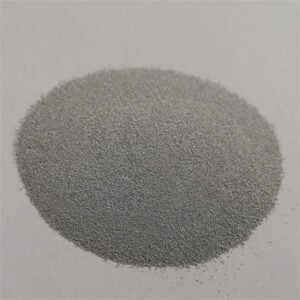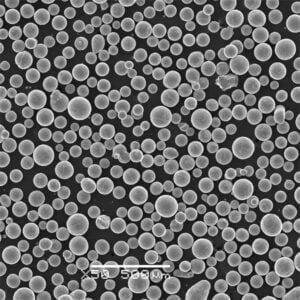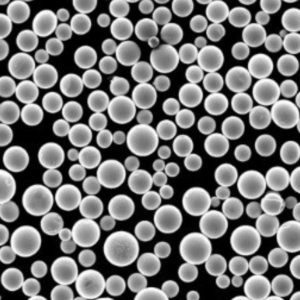インコネル3Dプリント部品
目次
概要 インコネル3Dプリント部品
インコネル3Dプリント部品は、積層造形(AM)法を使用してインコネル超合金粉末から製造された部品を指します。インコネル・グレードは、高強度とともに卓越した耐熱性と耐食性を備えており、航空宇宙、発電、その他の要求の厳しい用途に最適です。
インコネル3Dプリント部品の主な特性:
- 700℃以上の高温でも高い強度を維持
- 酸化、腐食を含む過酷な環境に耐える
- 複雑な形状をCADモデルから直接作成
- サブトラクティブ加工と比較して、リードタイムとBuy-to-Fly比率を削減
- インコネル625、718合金など、ニーズに合わせて選択可能
- 内部の空隙をなくすために熱間静水圧プレス(HIP)が必要
一般的なインコネル合金、機械的特性、後処理、用途、部品認定について詳しく知るには、続きをお読みください。
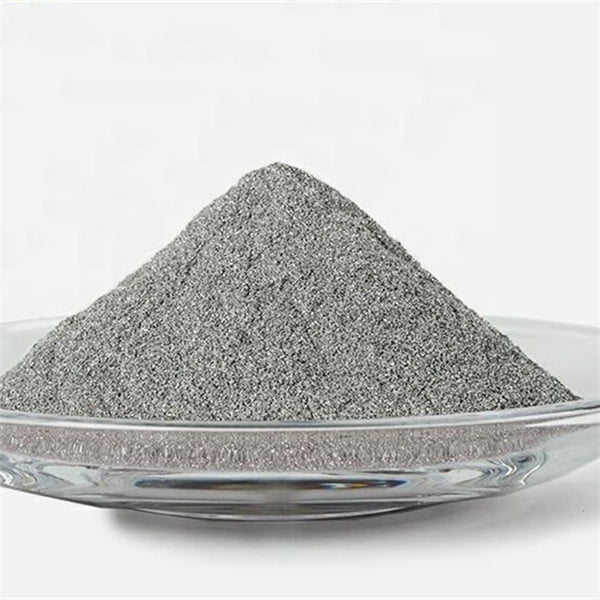
合金の種類
アディティブ・マニュファクチャリングに使用される一般的なインコネル・グレードには、以下のものがある:
| 合金 | ニッケル含有量 | 主な特徴 |
|---|---|---|
| インコネル625 | 60%分 | 優れた耐食性、980℃までの耐酸化性 |
| インコネル718 | 50-55% | 700℃まで最高の強度を維持、時効硬化反応 |
| インコネル939 | 該当なし | 優れた粗大結晶粒構造の安定性による高い最終使用温度 |
表1:AM加工が可能なインコネル超合金
これらの合金は、熱や腐食に曝された場合、ステンレ ス鋼よりも優れた性能を発揮する。インコネル718は現在最も広く採用されてい るが、新グレードはさらに能力を拡大する。
の性質 インコネル3Dプリント部品
インコネル3Dプリント部品が示す主な特性:
| プロパティ | 説明 |
|---|---|
| 高温強度 | 時効硬化合金は700℃まで強度を維持 |
| 熱抵抗 | 1000℃を超える使用温度も可能 |
| 耐食性 | 様々な酸性の海洋環境に適している |
| 耐酸化性 | 保護表面クロム酸化物層 |
| クリープ抵抗 | 高温下での荷重に対する変形抵抗 |
| 硬度 | 時効硬化でロックウェルC 40-45まで |
表2: インコネルAM合金の機械的・物理的特性の概要
強度、耐環境性、極端な温度下での安定性を併せ持つインコネルは、重要な用途において極めて汎用性の高い材料システムとなっている。
印刷部品の精度
インコネルAM合金で達成可能な寸法精度と公差:
| パラメータ | 能力 |
|---|---|
| 寸法精度 | 印刷値で±0.3%~±0.5% |
| 最小肉厚 | 0.020インチ~0.040インチ |
| 公差 | ±0.005インチ共通 |
| 表面仕上げ | 最大Ra 3.5 μm (140 μin)の印刷仕上がり |
表3: インコネルAM部品の印刷精度と表面仕上げの概要
機械加工や仕上げなどの後処理により、精度と表面仕上げをさらに向上させることができます。上記のデータは参考値です。具体的な要件については、お客様のアプリケーション・ニーズに応じて、候補となるベンダーとご相談ください。
インコネル3dプリント部品の試験
インコネルAMコンポーネントを最終用途に適合させるには、標準的な試験プロトコルが必要です:
| テスト | 目的 | サンプル・メソッド |
|---|---|---|
| 化学分析 | 合金化学と微細構造の確認 | 発光分光分析、画像解析 |
| 引張試験 | 引張強度と降伏強度の測定 | ASTM E8、ISO 6892 |
| 応力破裂試験 | 破断強度の経時変化 | ASTM E292 |
| 破壊靭性 | 耐クラック伝播性を理解する | ASTM E1820 |
| 腐食試験 | 環境における物質の質量損失を評価する | アストレムG31、アストレムG48 |
| 非破壊検査 | 表面/サブサーフェス欠陥の検出 | 浸透探傷検査、CTスキャン |
表4: インコネルAMプリント部品の一般的な試験方法
データは、AMS、ASME、AWSなど、最終用途や使用環境に応じて適用される業界仕様に準拠していなければならない。AMベンダーと必要な検証テストについて話し合う。
アプリケーション
厳しい環境下でインコネル3Dプリント部品を使用する産業:
| 産業 | コンポーネント | メリット |
|---|---|---|
| 航空宇宙 | タービンブレード、ロケットノズル | 高い使用温度でも強度を維持 |
| 発電 | 熱交換器、バルブ | 高温強度を備えた耐食性 |
| 石油・ガス | 坑口部品、フラクチャリング部品 | 過酷な坑内条件に耐える |
| 自動車 | ターボチャージャーハウジング | 排熱と排ガスの処理 |
| 化学処理 | 反応容器、導管 | 腐食反応に対する耐性 |
表5: 各業界におけるインコネルAMパーツの使用概要
インコネル合金は、アプリケーションの要求を満たすことができない従来の製造ハードウェアに代わって、軽量で高性能なコンポーネントを製造します。
後処理 インコネル3Dプリント部品
インコネルAMプリント部品の一般的な二次加工:
| プロセス | 目的 | 方法 |
|---|---|---|
| 熱間静水圧プレス | 内部の空洞をなくし、密度を向上 | 高圧、高温不活性ガス |
| 熱処理 | 微細構造を調整し、特性を確定する | 固溶化熱処理、合金固有の時効プロファイル |
| 機械加工 | 寸法精度と表面仕上げの向上 | CNCフライス/ターニング・センター |
| コーティング | 耐摩耗性、耐食性、耐熱性の向上 | 溶射、PVD、CVDコーティング |
表6: インコネルAMプリント部品の推奨後加工技術
ほぼすべての部品は、使用前にHIPと熱処理を受ける。浸透探傷検査やCTスキャンなどの追加的な表面下チェックも認証に反映されます。お客様の部品に合わせたプロトコルについて、AMベンダーとご相談ください。
コスト分析
| パラメータ | 代表値 |
|---|---|
| インコネル粉末コスト | $100-500/kg |
| 購入比率 | 1.5 : 1 |
| リードタイム | 印刷部品は4~8週間 |
| プリンターの利用 | 50-75% |
| 仕上げ手当 | 印刷部品コストの30% |
表7: インコネルAM部品製造のコスト要因
パウダーの再利用はコスト効率に大きく貢献する。機械加工やコーティングのような仕上げ工程にも費用がかかり、複雑さに応じて印刷コストより30%かそれ以上の予算を組む必要があります。
長所と短所
メリット
- ステンレスやチタン合金よりもはるかに高い使用温度に耐える。
- コンポーネントは温度範囲にかかわらず高い強度を維持
- 従来にない冷却流路形状で熱伝達を強化
- インコネル鋳造品に匹敵する、あるいはそれ以上の機械的特性
- 従来よりも大幅に軽量化されたプリント・ハードウェア
- 100%に近いバイ・トゥ・フライ比、無駄なパウダーがほとんどない
- オンデマンド・デジタル在庫によるリードタイムの短縮
デメリット
- 材料費が非常に高く、パウダーで1kgあたり約$100
- システムの生産性は低く、1日あたり約5kgのパウダーを使用
- 新しい部品や合金に必要なパラメータの大幅な最適化
- 航空宇宙および原子力分野で義務付けられている広範な資格試験
- 特殊なAM装置には高いオペレーター・スキルが必要
- パウダーの再利用は、リフレッシュまでにわずか10~20サイクルまで
- ポロシティと残留応力のため、HIPと仕上げ加工が必要

よくある質問
Q: どのサイズのインコネル部品を3Dプリントできますか?
A: 最新のシステムでは、最大で直径1,000mm、高さ600mmまでの製造が可能です。より大きなコンポーネントは、サブアセンブリに分割する必要があります。マルチレーザープラットフォームは、部品サイズをさらに拡大し続けています。
Q: インコネル印刷には特別な施設や設備が必要ですか?
A: 一般的にインコネルは、フィルターや真空システムではなく、不活性アルゴン・ガス・チャンバー内で印刷されます。それ以外は、エキゾチックな追加をしなくても、標準的な金属AMマシンが適用されます。微粉末の取り扱いには注意が必要ですが、特別な部屋は必要ありません。
Q: インコネルAM部品の注文にはどれくらいのリードタイムがかかりますか?
A: 一般的な見積もりリードタイムは、部品のサイズ、後処理、選択したテストによって異なりますが、4~10週間程度です。デジタル在庫は遅れを軽減するため、印刷された部品は供給不足の鋳物よりも早く出荷されます。
Q: インコネルAMのビジネスチャンスがある業界は?
A: 航空宇宙、宇宙、石油化学、原子力分野がインコネルのような高性能合金の採用を後押ししている。医療分野では、認定インプラントの設計が伸びている。標準的なステンレス鋼や工具鋼の部品はコモディティ化しており、よりエキゾチックな合金が関心を集めている。
Q: AMによって、これまで不可能だった新しいインコネル・アプリケーションは可能になりますか?
A: AMは、これまで不可能だったコンフォーマル冷却チャンネルや中空内部構造を容易にし、狭いスペースでの熱伝達を向上させます。また、従来は重量が重く、機械加工が困難だったロケットや人工衛星の上部にも使用されています。継続的な研究開発により、将来の能力はさらに拡大する。
シェアする
MET3DP Technology Co., LTDは、中国青島に本社を置く積層造形ソリューションのリーディングプロバイダーです。弊社は3Dプリンティング装置と工業用途の高性能金属粉末を専門としています。
関連記事
Met3DPについて
最新情報
製品

3Dプリンティングと積層造形用金属粉末






